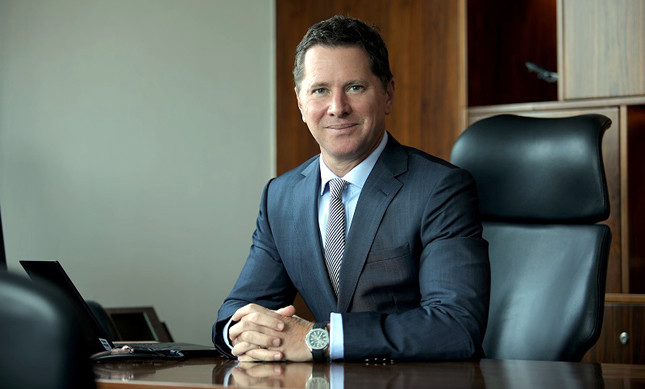FDI to drive Vietnam's GDP growth to 6.8%: HSBC
It is unwise to bet against the ability of Vietnam and the Vietnamese to achieve targets and challenges they set themselves, said the CEO of HSBC Vietnam Tim Evans.
Vietnam’s economy should get back to GDP growth of 6.8% in 2022, which will be driven by a return to strong FDI investment into the market, with a clear focus on the manufacturing sector.
| CEO of HSBC Vietnam Tim Evans. |
CEO of HSBC Vietnam Tim Evans gave the remarks in a note discussing the economic outlook in 2022, noting this would benefit Vietnam export, especially as “free trade agreements that have been signed over the past two years start to bear fruit.”
According to Tim, foreign direct investment (FDI), Vietnam’s key driver of growth, is still robust and was only marginally impacted given the serious lockdown that the country applied in 2021.
Total registered FDI from January 1 to November 20 increased 0.1% with 1,577 newly-licensed projects while total implemented capital was down 4.2%.
Exports for the first 11 months of the year went up 17.5%, thereby still registering a slight surplus.
The continued expansion of the middle class and in particular the rising affluent sector will lead to changes in consumption as Vietnamese start spending more and more on leisure and travel.
Infrastructure roll-out will also continue to fuel economic activity especially in the renewables/green arena given the strong ambitions made by the Vietnamese authorities following COP26. In this case, Tim said Vietnam has set an “aspirational target” of 75% of all energy created in the country is to be from renewable means by 2045.
“This is certainly very ambitious but anyone who has followed Vietnamese history knows that it is unwise to bet against the ability of Vietnam and the Vietnamese to achieve targets and challenges they set themselves,” Tim said.
Meanwhile, the PMI index which reflects confidence, ticked up to 52.2 in November signaling a second successive modest improvement in business conditions following a period of decline caused by the 4th Covid wave that started in April. Activity has picked up over the last few months and confidence is slowly returning though challenges remain around getting workers back into factories.
“As a result of the easing of production disruptions and pent-up pressures in global supply chains, we are starting to see a bounce but we need to be mindful of any slowdown in export growth as developed markets start to move consumption from goods back to services,” Tim said.
“We anticipate that if the world can continue to pull out of the Covid crisis, there will be a significant capital investment cycle that will take place across the world which should ensure that demand for industrial electronics remains robust and this will benefit the Vietnamese economy,” he suggested.
Surging energy prices to watch in 2022
Tim noted there are areas which Vietnam will need to keep a watchful eye on as they could potentially negatively impact the economy on a go-forward basis. One issue worth monitoring is the surging energy prices. As an example, transport costs have risen rapidly and have become one of the main drivers for local inflation.
“Our current view is that a relatively gradual recovery in domestic demand might offset higher energy prices, and therefore inflation is expected to rise to 3.5% for 2022 which remains below government thresholds,” he said.
“The big swing factor is sadly still Covid but on a go-forward basis, any outbreaks that need to be brought under control, will be done through targeted restrictions or lockdowns, rather than the blanket restrictions that many countries undertook in 2021 with a strong negative impact on their respective economies,” Tim concluded.












